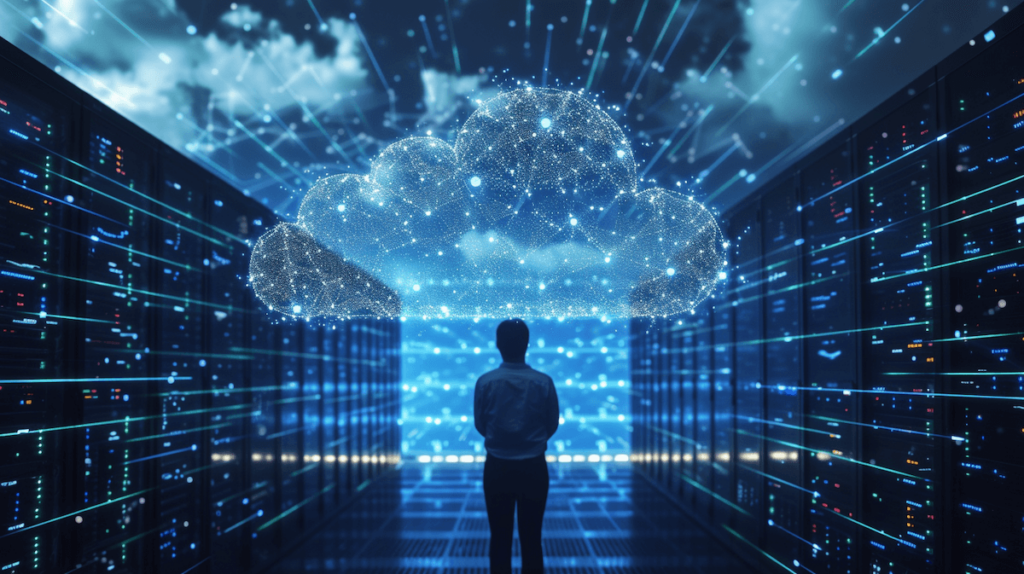Your business may still depend on one or more robust legacy applications. From a cost and user access perspective, would it be beneficial to migrate some or all of them to the cloud?
Software Environments
Let’s start by looking at four general environments in which business software runs. For a given organization, these are not mutually exclusive.
- Traditional on-premises — Legacy commercial and homegrown apps
- Infrastructure as a Service (IaaS) private cloud — Legacy commercial and homegrown apps, user desktops
- Platform as a Service (PaaS) private cloud — Custom app platforms like Heroku and Google App Engine
- Software as a Service (SaaS) public cloud — Multi-tenant applications like Salesforce, DropBox, and Google Workspace
Traditional On-Prem Applications
Here is a partial list of traditional on-premises applications grouped by category. These traditional applications were historically installed on local servers and desktop machines.
They are all candidates for transitioning from on-premises computers to a private cloud.
| Category | Application Examples |
|---|---|
| Microsoft Office | Word Excel PowerPoint Outlook Desktop |
| Financial Applications | QuickBooks Enterprise LaCerte Microsoft Dynamics GP and NAV Sage 100, 300, and 500 |
| ERP Solutions | SAP R/3 and SAP ECC Oracle JD Edwards EnterpriseOne and World Aptean Made2Manage Infor Lawson Infor LN (Baan) Infor Syteline Epicor SYSPRO |
| Databases | Microsoft SQL Server Oracle Filemaker Pro Microsoft Access Visual FoxPro |
| CRM Software | ACT! GoldMine Infor CRM SLX Maximizer |
| Creative and Design | AutoCAD (older versions) Adobe Creative Suite |
Perhaps your company uses one or more of the above application brands.
What and Where to Migrate
In some cases, replacing a legacy application with software that appears to be a cloud-native equivalent (at least on the surface) poses too much risk.
For example, a cloud-native system may not meet the business’s needs, and replacing existing system integrations may be difficult and costly.
For proprietary homegrown systems without commercial equivalents, replicating the system’s functionality on a SaaS platform like Salesforce (low-code/no-code) or a PaaS platform like Heroku (mainly code) may be prohibitively expensive.
On the other hand, there are risks with continuing to run a legacy system in-house. These risks include
- Future increases in hardware & maintenance costs
- Insufficient protection from cyber-attacks
- Unreliable data backups
- Ongoing access issues for members of a distributed workforce.
The middle ground is migrating legacy systems — commercial and homegrown — to a private cloud as a modernization strategy.
This is typically done by shifting applications to Infrastructure as a Service (IaaS) in the cloud. Server virtualization often replaces dedicated on-prem server hardware.

Once applications are transitioned to a private cloud, authorized employees and contractors can securely access them from any device running an HTML5-compatible browser such as Chrome, Edge, Firefox, and Safari.
Devices that can access the private cloud include PCs, Macs, Chromebooks, and tablets.
Another benefit to this ‘thin client’ access is that users can’t accidentally or purposefully introduce malware into the environment.
Benefits of Migrating Legacy Applications
The following are the benefits of modernizing your environment by shifting legacy apps from on-premises to a private cloud.
Enhanced Efficiency
Migrating legacy applications to the cloud can improve operational efficiency.
Cloud services provide flexibility and scalability, allowing businesses to adjust to changing demands quickly without significant infrastructure investments.
Reduced IT Capital Costs
Small businesses migrate to the cloud to save on capital expenditures like servers and disaster recovery systems.
The pay-as-you-go model of most private cloud services means you only pay for what you use, eliminating the need for significant upfront investments in hardware and maintenance.
While shifting apps to a private cloud involves upfront onboarding and migration costs, it’s critical to factor in the difference in long-term costs.
Improved Security and Compliance
Unlike the misconception that the cloud is less secure, cloud providers invest heavily in security, usually more than a small business can afford.
There are economies of scale in implementing cybersecurity software at the service provider level.
Cloud providers typically comply with various regulatory and industry standards, reducing the burden on small businesses to manage compliance.
If your IT partner has a CISSP (Certified Information Systems Security Professional) on staff, that person can assist with your organization’s compliance requirements, such as ISO, SOC, CMMC, HIPAA, and GDPR.
More Reliable Backups & Disaster Recovery
Private cloud providers offer automatic backups and disaster recovery solutions, ensuring critical business information is protected, easily recoverable, and less susceptible to loss.
This is another area in which economies of scale factor in.
Enhanced Mobile and Remote Office Access
In support of an increasingly distributed global workforce, remote and mobile users have more convenient and reliable access to files and apps that have been shifted to the cloud.
IT teams can avoid the sometimes problematic application deployment and maintenance on remote computers.
Private cloud-hosted applications allow employees to access information and work from anywhere, fostering a more flexible and responsive work environment.
Competitive Advantages
Companies must find ways to maintain a competitive edge in today’s competitive marketplace.
Organizations can improve sales, marketing, and customer service processes with streamlined operations from shifting applications to the cloud.
The Move to a Private Cloud, Step-by-Step
If you work with an IT service provider offering a managed private cloud, that organization can execute the following legacy application migration steps.
- Assess Your Current Infrastructure: Understand your current applications and which ones would benefit most from cloud migration.
- Choose the Right Private Cloud Provider: Look for a provider that offers the services you need at a price that makes sense for your business.
- Plan Your Migration: Develop a detailed migration plan, including timelines and contingencies.
- Train Your Staff: Ensure employees are trained to access cloud-based applications.
- Monitor and Optimize: After the migration, continuously monitor performance and optimize as needed to maximize your cloud investment.
By migrating legacy applications to the cloud, small and midsize businesses can modernize their IT environment to thrive in today’s digitally dominated landscape.


